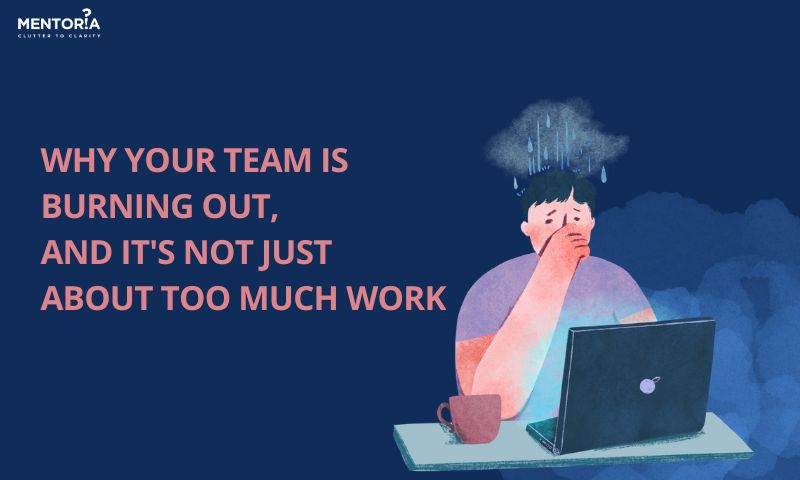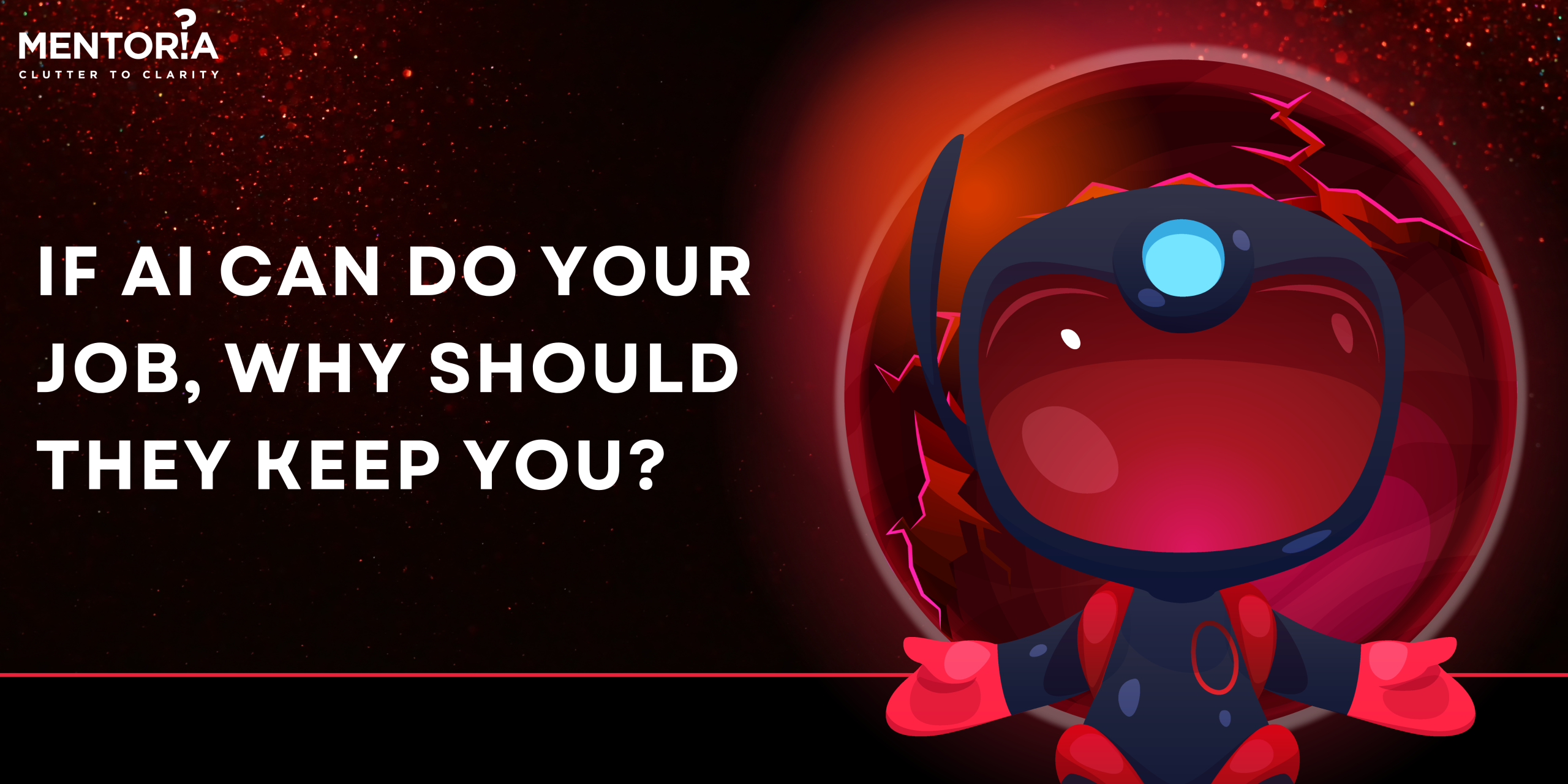Why Your Team Is Burning Out, And It’s Not Just About Too Much Work

Let’s talk about something we’ve all felt but might not have fully understood: burnout. Feeling like your team is caught in the burnout trap? Guess what, it’s not just the never-ending to-do list causing the fatigue—it’s the sneaky collaborator in the shadows. We’re about to spill the tea on collaboration overload, the silent stressor stealing your team’s mojo. In this blog, we’re going to shine a light on collaboration overload and give you some practical solutions to keep our team ship sailing smoothly!
Why Is Your Team Burning Out?
Collaboration Burnout: Unmasking The Culprit
Ever felt that creeping fatigue despite ticking off tasks? Well, collaboration burnout might be the stealthy culprit. Picture this: endless meetings, constant team messages, and collaborative projects piling up. It’s not just the work; it’s the unending teamwork that can take a toll. To tackle this, we need to unmask the culprit — collaboration overload.
How can we identify collaboration burnout?
Spotting collaboration burnout is like recognising the telltale signs of exhaustion after a non-stop Netflix binge. Look for signs of fatigue, decreased enthusiasm, and reduced creativity in your team. If coffee breaks feel like a lifeline, it might be time to address the collaborative demands causing burnout.
Strategies to combat collaboration burnout:
- Team Surveys: Regularly check in with your team through anonymous surveys to gauge their stress levels and identify areas of collaboration overload.
- Task Delegation: Ensure tasks are distributed evenly to prevent a single team member from shouldering excessive collaborative responsibilities.
- Defined Communication Hours: Set specific hours for collaborative activities to prevent an “always-on” mentality, allowing team members to recharge.
- Encourage Breaks: Promote short breaks between collaborative tasks to give team members a chance to recharge and prevent burnout.
Structural Simplification: Untangling The Web
Ever felt like you’re navigating a web of confusion in your team structure? Well, you might be onto something. Structural complexity can be a sneaky contributor to collaboration burnout. Imagine this: hierarchies that feel like mazes, communication channels that resemble a tangled headphone wire, and conflicting priorities creating a web of chaos.
How can we simplify team structures?
Start by examining your team’s hierarchy like you’re Marie Kondo decluttering a closet. Identify redundant roles, streamline communication channels, and pinpoint competing priorities. Think of it as tidying up your team’s organisational space for enhanced efficiency.
Strategies for structural simplification:
- Hierarchy Audit: Regularly review the team’s hierarchy to ensure it aligns with current needs and goals.
- Communication Channels: Streamline communication tools and establish clear guidelines to reduce confusion.
- Role Redefinition: Clarify roles and responsibilities to eliminate redundancy and enhance efficiency.
- Competing Priorities Workshop: Conduct workshops to align team members on shared priorities, minimising conflicts.
Streamlining Workflows: Navigating The Tech Maze
Ever felt like technology is supposed to simplify life but somehow complicates it instead? Welcome to the modern workplace, where new technologies and platforms promise efficiency but often introduce complexities. The constant buzz of notifications, the array of collaborative tools, and the maze of digital workflows can turn your tech-driven paradise into a headache.
How can we streamline tech-driven workflows?
Think of it as a digital spring cleaning. Engage your team in identifying areas where technology might be causing unnecessary stress. It’s time to navigate the tech maze and establish clear, team-wide collaborative norms to simplify digital workflows.
Strategies for tech-driven workflow simplification:
- Workflow Assessment: Conduct regular assessments to identify bottlenecks and areas of stress caused by technology.
- Collaborative Norms: Establish team-wide norms for using collaborative tools, ensuring consistency and reducing friction.
- Digital Detox Days: Implement occasional “digital detox” days where the team minimises the use of collaborative tools to alleviate stress.
- Training Sessions: Provide training sessions for new technologies, ensuring the team is well-equipped to use them effectively.
Micro-Teams Vs. Microstress: Balancing Collaboration
Have you noticed a surge in micro-teams taking on projects within your organisation? While micro-teams can be powerhouses for innovation, they can also lead to collaboration overload. Consider small teams collaborating intensely, constantly communicating, and inadvertently causing microstress for team members.
How can we balance micro-teams and collaboration?
It’s like managing a delicate recipe; too much or too little of an ingredient can throw off the balance. Keep an eye on the number of micro-teams and strive for a sweet spot where collaboration enhances teamwork without overwhelming your employees with microstress.
Strategies for balancing micro-teams:
- Project Allocation: Monitor the number of micro-teams formed for projects, ensuring they align with the project’s scope and requirements.
- Communication Boundaries: Establish clear communication boundaries for micro-teams to prevent constant collaboration and allow for focused work.
- Regular Check-ins: Conduct regular check-ins to gauge the stress levels of team members involved in micro-teams and address any concerns.
- Collaborative Impact Assessment: Evaluate The Impact Of Micro-Teams On Overall Team Performance And Make Adjustments As Needed.
Purposeful Collaboration: Beyond Corporate Mantras
Ever felt like corporate mantras sound good but lack personal connection? That’s because genuine purpose thrives not just in grand statements but in the everyday interactions between colleagues. Imagine this: a workplace where positive, everyday collaboration is the beating heart of your shared purpose.
How can we infuse purpose into everyday collaboration?
It’s like finding the melody in the background noise. Enable your team to build on each other’s ideas, creating a harmonious work environment that emphasises you’re in this together. Purposeful collaboration is about recognising the value in the small, daily interactions that contribute to a collective sense of purpose.
Strategies for infusing purpose into collaboration:
- Idea-Building Sessions: Create spaces for regular idea-building sessions, encouraging team members to contribute and build upon each other’s ideas.
- Positive Feedback Culture: Foster a culture of positive feedback and acknowledgment for collaborative efforts, reinforcing the importance of everyday interactions.
- Cross-Functional Collaboration: Encourage collaboration across different functions within the organisation to broaden perspectives and strengthen a shared sense of purpose.
- Celebrating Small Wins: Celebrate small collaborative victories, emphasising the collective impact of everyday interactions on achieving larger goals.
Building A Collaborative Culture: In This Together
Ever felt like you’re on an island at work, isolated from the collective energy of your team? It’s time to forge a collaborative culture where open communication, idea-sharing, and mutual support are the norm. Imagine a workplace where everyone feels valued, contributing to a collective success that’s greater than the sum of its parts.
How can we build a collaborative culture?
Think of it like assembling a puzzle; every piece has a place, contributing to the overall picture. Encourage a culture where teamwork isn’t just a buzzword but an integral part of the work environment. It’s about fostering a sense of togetherness, ensuring everyone plays a crucial role in the team’s success.
Strategies for building a collaborative culture:
- Open Communication Platforms: Implement open communication platforms that facilitate idea-sharing and discussion among team members.
- Team-Building Activities: Organise regular team-building activities to strengthen interpersonal connections and build a sense of camaraderie.
- Cross-Departmental Collaboration: Foster collaboration between different departments to break down silos and create a more cohesive work environment.
- Recognition Programs: Establish programs to recognise and reward collaborative efforts, reinforcing the importance of collective success.
Collaborate And Prevent Team Burnout!
In the quest for workplace efficiency, collaboration should enhance, not erode, team well-being. Recognising and addressing collaboration overload is the first step toward a balanced and thriving team. By simplifying structures, streamlining workflows, and fostering purposeful collaboration, you empower your team to navigate the challenges of modern work while preserving their collective energy and enthusiasm. It’s time to strike the right balance and ensure that collaboration becomes a catalyst for success, not a source of burnout.
Feeling the burnout blues, but suspect it’s not just about the workload? Maybe it’s time to have a chat with Mentoria and see how you can beat the stress with our tailored corporate workshops. Give us a call, or simply get on a chat with us – we’re here to help!









